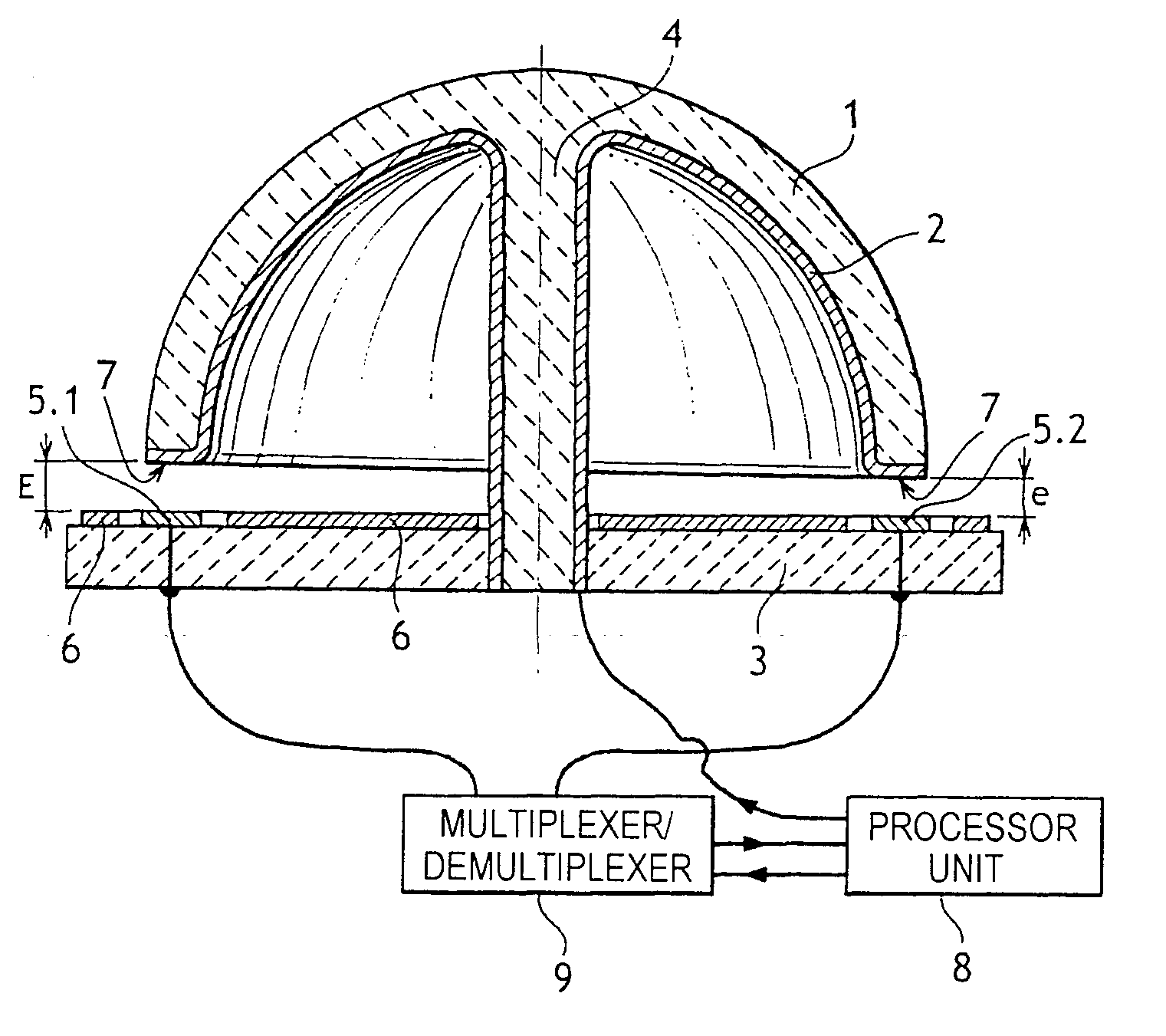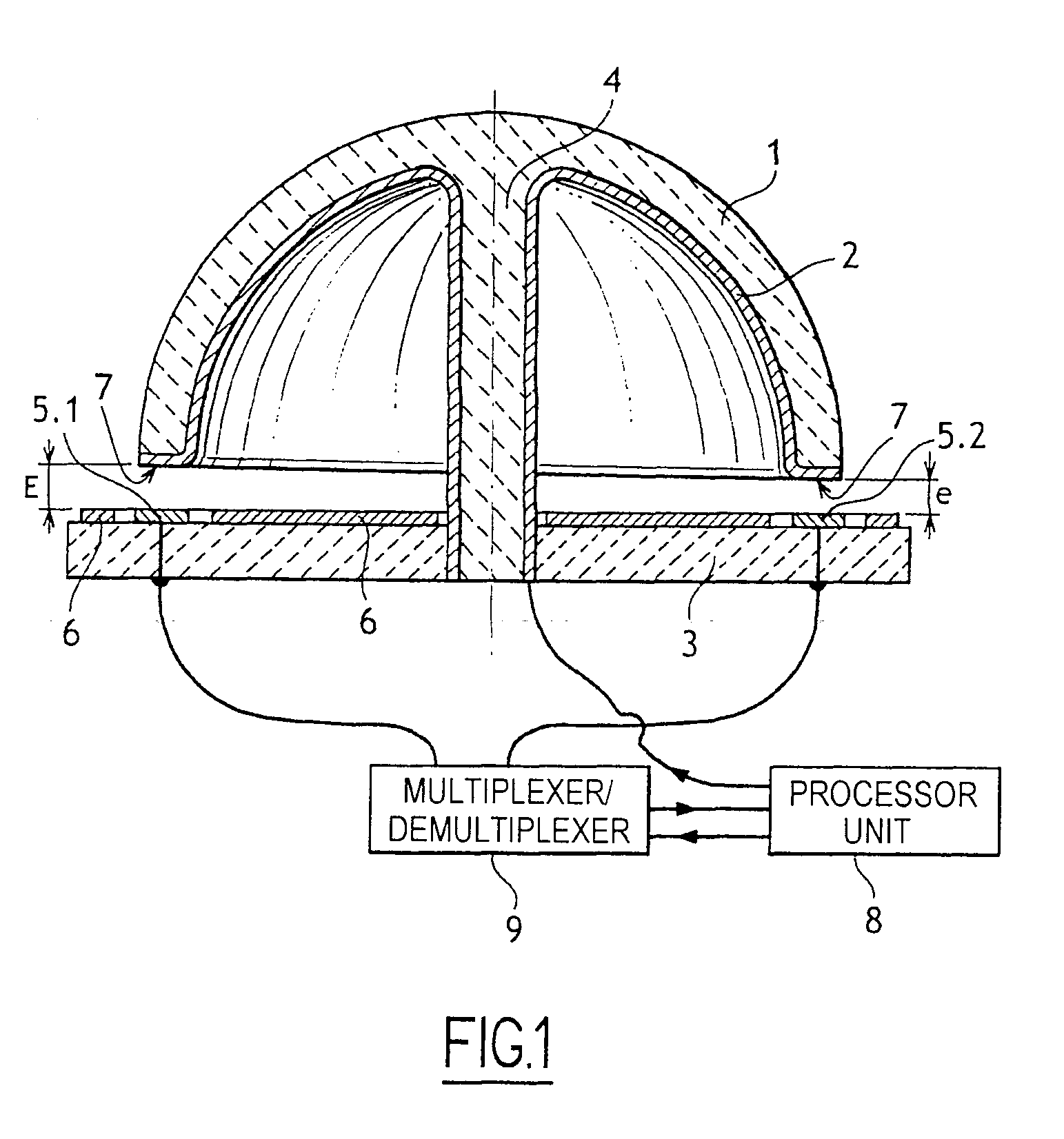Method of compensating anisotropy in a vibrating-bell inertial rotation sensor
- Summary
- Abstract
- Description
- Claims
- Application Information
AI Technical Summary
Benefits of technology
Problems solved by technology
Method used
Image
Examples
Embodiment Construction
[0010] With reference to the figure, the compensation method of the invention is applied to an inertial rotation sensor comprising in conventional manner a vibrating bell 1, in this case a hemispherical bell made of silica and secured by a stalk 4 to a stand 3. The inside surface of the bell 1 and the end face of the edge of the bell and the stalk 4 are covered in a layer of metal 2 which is connected to a processor unit 8 in order to receive a direct current (DC) bias voltage. The stand 3 carries a guard electrode 6 and control and detection electrodes, generally eight in total, extending facing the edge 7 of the bell 1 and regularly distributed around the axis of the bell 1. The figure shows only two electrodes 5.1 and 5.2 that are diametrically opposite. These electrodes may equally well be control electrodes or detection electrodes. In the figure, the distance between the electrodes and the edge 7 of the bell has deliberately been exaggerated in order to show more clearly the di...
PUM
 Login to View More
Login to View More Abstract
Description
Claims
Application Information
 Login to View More
Login to View More - R&D
- Intellectual Property
- Life Sciences
- Materials
- Tech Scout
- Unparalleled Data Quality
- Higher Quality Content
- 60% Fewer Hallucinations
Browse by: Latest US Patents, China's latest patents, Technical Efficacy Thesaurus, Application Domain, Technology Topic, Popular Technical Reports.
© 2025 PatSnap. All rights reserved.Legal|Privacy policy|Modern Slavery Act Transparency Statement|Sitemap|About US| Contact US: help@patsnap.com


